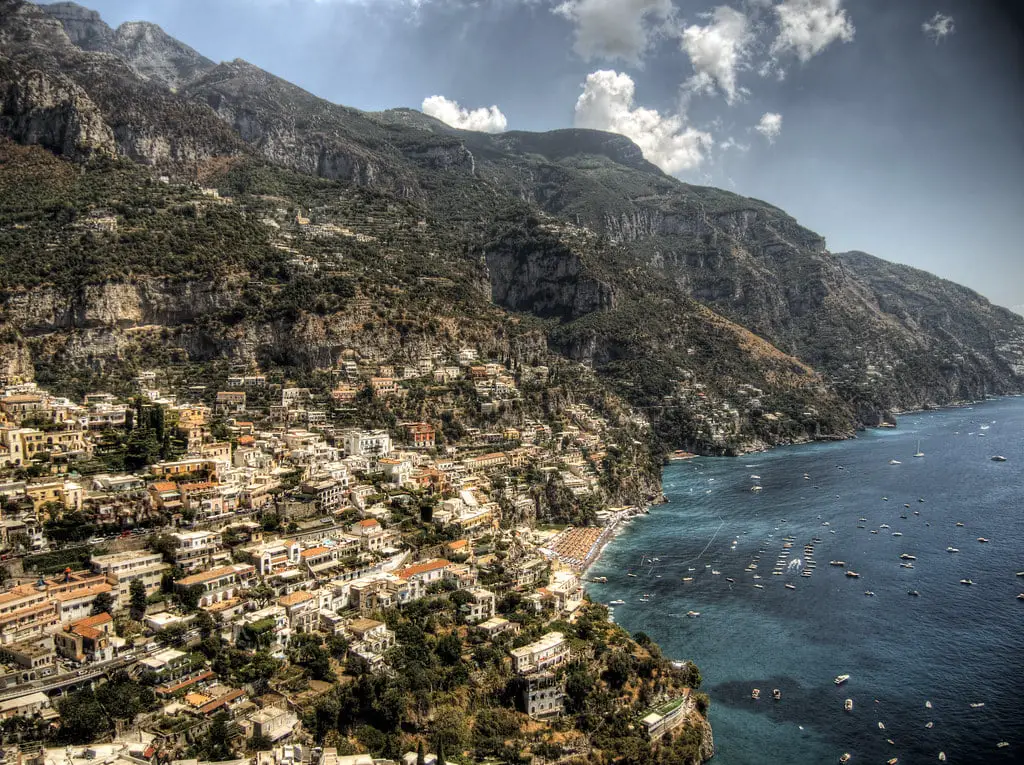Positano is an amazing town on Amalfi Coast with beautiful beaches, tiny steep streets full of flowers, breathtaking views, and lovely nature. Nowadays, it is the favorite vacation place for many celebrities and jet-set people. But, when was Positano built? Actually, no one knows the answer to this question. There are few theories about the origin of Positano.
One of them says that Positano dates back to prehistoric times. The other one says that Positano was built in ancient Roman times while the third one says that Positano was founded in the 9th century around a Benedictine abbey. Not only the origin of this lovely town is a mystery, but its name too. The name of Positano is linked to even two legends.
How Positano got its name?
The first legend says that Positano got its name in the period of Greek expansion in the Mediterranean. It is believed that the name “Positano” was a dedication to the Greek god of the sea called Poseidon. The second legend is more popular. It says that in ancient times, there was a Turkish merchant ship that started sinking close to the shores of Positano.
On the ship, there was a painting of the Virgin Mary that started to whisper “posa, posa” (set me down) to the captain. Therefore, the captain threw the image into the sea, and miraculously, the ship started to float again. The locals found the painting of the Virgin Mary on the shore and decided to build a Church on that spot. They passed the story from generation to generation and this event was the reason why this town got the name Positano.
When was Positano built?
The first theory, the one that Positano existed in prehistoric times, supports the archaeological findings from the cave Sponda. That findings prove that in the Positano area there were humans even before around 11,000 years, in the period of the last glaciation.

The second theory puts the birth of the town in ancient Roman times. It is believed that Positano was a popular vacation place for ancient Roman emperors. Underneath the church of Santa Maria Assunta, there is a well-preserved ruin of the Roman Villa that is nowadays turned into the Museo Archeologico Romano. The museum is open to tourists, so you can see with your own eyes a beautiful Roman villa with a lot of artifacts and paintings.
The third theory, and probably the most accurate, is linking the origin of Positano in the 9th century. In those times, the biggest problem in southern Italy was an invasion of Saracens. Therefore, many people fled to different abbeys where they were safe. In the area of nowadays Positano, there was a Benedictine abbey that took many refugees. When the Saracen invasion was weakened, those refugees developed a town around the abbey that got the name Positano.
Development of Positano
From the 9th to 11th century Positano was part of the Republic of Amalfi. Amalfi was a powerful neighboring town with steep narrow roads, massive fortified walls, and a series of all-important watchtowers. The population of Positano at that time was very active and did not give up on trade despite not having a port that could accommodate trading ships.
In 1343, Positano was destroyed by a terrible tsunami that slowed down the development of the town. Also, in the 15th century, the town was under constant attacks by Ottoman pirates and troops. In the 18th century, Positano enjoyed a period of prosperity as a significant trading town with its port.

But in the 19th century, there was a huge downfall of trading in Positano because its people were unable to build fast and technologically advanced ships. Therefore, many citizens of Positano decided to emigrate to the United States, and Positano became a humble fishing village. It began to attract a large number of tourists in the 1950s and today it is one of the most popular coastal towns in Italy.
Check out more articles about Positano:
- Things to do in Positano
- Best restaurants in Positano
- Cheap eateries in Positano
- How to get to Positano
- Best 5 star hotels in Positano
- Best 4 star hotels in Positano
- Best 3 star hotels in Positano
- Cheap Airbnb in Positano
- Best Pizza in Positano
- Positano: Charming town on Amalfi Coast
- Is Positano safe?
- What is the best time to visit Positano?
- What to do in Positano when it rains?
- What to wear in Positano?
- What to buy in Positano Italy?
- What is the closest airport to Positano Italy?
- Where to shop in Positano?
- Where to park in Positano?
- Is a day trip to Positano worth it?
- Sorrento or Positano which is better?

